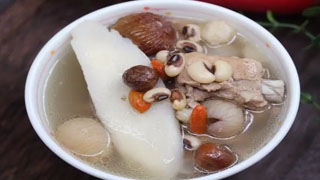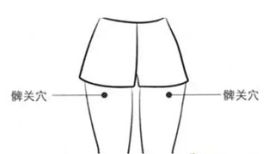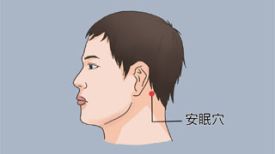
Due to poor work and dietary habits, many modern people suffer from stomach diseases. The stomach is responsible for receiving and descending, forming a sea of water and grains. The spleen and stomach transform into the essence and qi of the day after tomorrow, which ancient people called the foundation of the day after tomorrow. There are many similarities between epigastric pain and the pain discussed by ancient people. In the book "Classification and Treatment of Diseases", there are nine types of pain: drinking pain, eating pain, cold pain, fire pain, qi pain, blood pain, palpitation pain, insect pain, and prickly pain, each of which is treated with a main prescription. The stomach nourishing soup shared today is a self formulated formula by Hu Yongsheng, a traditional Chinese medicine practitioner, based on long-term clinical practice. Except for those that are not suitable for treating heart pain caused by fire, the other 8 formulas can be used as the basic formula with modifications according to the syndrome, and have been proven effective.
【 Composition of Soup Formula 】
Codonopsis pilosula 15, Atractylodes macrocephala 10, Poria cocos 10, Roasted licorice 6, Osmanthus fragrans 10, Red Flower 3
Dialectical dosage, boil soup and take juice to drink
Analysis of Soup Formula
Codonopsis pilosula is the ruler, sweet and warm, nourishing qi, strengthening the spleen and stomach. I use the bitter and warm Bai Shu to strengthen the spleen, dry dampness, and enhance the power of nourishing qi and promoting good luck; Paired with sweet and light Poria cocos, it can invigorate the spleen and eliminate dampness. When combined with the Ling technique, it enhances the function of invigorating the spleen and dispelling dampness. Use roasted liquorice to replenish qi and harmonize various medicines. Guangmu Xiang, with its pungent and bitter dispersing properties, can warm and promote digestion. It is good at promoting gastrointestinal health, resolving stagnation of qi in the three burners, and can also invigorate the spleen and reduce food intake. By using its aromatic and promoting properties, combined with the nourishing properties of Sijunzi Tang, it can nourish without stagnation. For Honghua, take its pungent and warm dispersing properties, which can promote blood circulation, relax collaterals, and relieve reflux. When combined with Muxiang for pain relief, it can effectively promote blood circulation, relax collaterals, and relieve reflux.
Clinical Application
1: Drinking heartburn, you can add Guizhi (imitating the meaning of Linggui Zhugan Tang) to warm the yang and dissolve the drink, and Gualou Ren to clear phlegm and disperse nodules.
2: Eating heartbroken food can be supplemented with sand kernels to strengthen the stomach and prevent nausea, while chicken's internal gold can be consumed and dissolved.
3: Cold pain relief can be achieved by adding dried ginger to warm the stomach (Li Zhong Tang meaning) and Wu Zhu Yu to dispel cold and relieve pain.
4: Qi and heartache can be relieved by adding Yu Jin (reversing Mu Jin and dispersing emotions), and Wu Yao can relieve pain with a broad and moderate effect.
5: Blood pains can be relieved by adding peach kernels to promote blood circulation and remove blood stasis, and using mountain nail beads to unblock collaterals and relieve pain.
6: Trembling and heartbroken, sour jujube kernels can be added to nourish the heart and calm the mind, and the dragon bone can be used to calm the shock and stabilize the palpitations.
7: Worms cause heartache, and can be treated with Wumei'an roundworm for pain relief, while the bark of Melia azedarach can be used to kill insects and eliminate accumulation.
8: Heat and heartache, add Huoxiang to dispel impurities and reduce turbidity, and Gongxiangxiang to promote qi circulation and relieve pain.
9: Huoxintong (supplement), increased dosage honeysuckle (50g), Huanglian (10g)
Author's note: Hewei Tang is a combination of Four Gentlemen's Decoction and Wood Fragrance Red Flower Decoction. It is used to strengthen and protect the essence, balance qi and blood, and promote vitality to improve the function of the stomach itself. Adding Guangmu Xiang, taking its pungent and bitter essence to reduce temperature and promote digestion, it is good for the gastrointestinal tract, resolving the stagnation of qi in the three burners, and can also invigorate the spleen and digest food. By using its fragrant and promoting properties, combined with the nourishing properties of Sijunzi Tang, it can promote nourishment without stagnation, which is beneficial for regular consumption. If the middle burner of the spleen and stomach is in harmony, then both the upper lungs and lower kidneys are in harmony. This axis runs, and the spleen circulates its body fluids to the stomach without causing the stomach to become imbalanced. The lungs regulate the water channels for the kidneys without causing the qi to flow upward; The spleen rises and the stomach falls, and natural qi flows from the bloodstream. The body of the stomach is nourished and full of vitality, making it easy to restore health. This formula has been repeatedly used for treating epigastric pain and has shown significant therapeutic effects. If the fragrance in the soup is used to invigorate the stomach and spleen, 3g is recommended. If it is used for pain relief, the amount can be increased to 15g. If it is used for nourishing blood and blood, 3g is recommended for safflower. If it is used for blood pain relief, the amount can be increased to 15g to alleviate blood stasis and pain.


